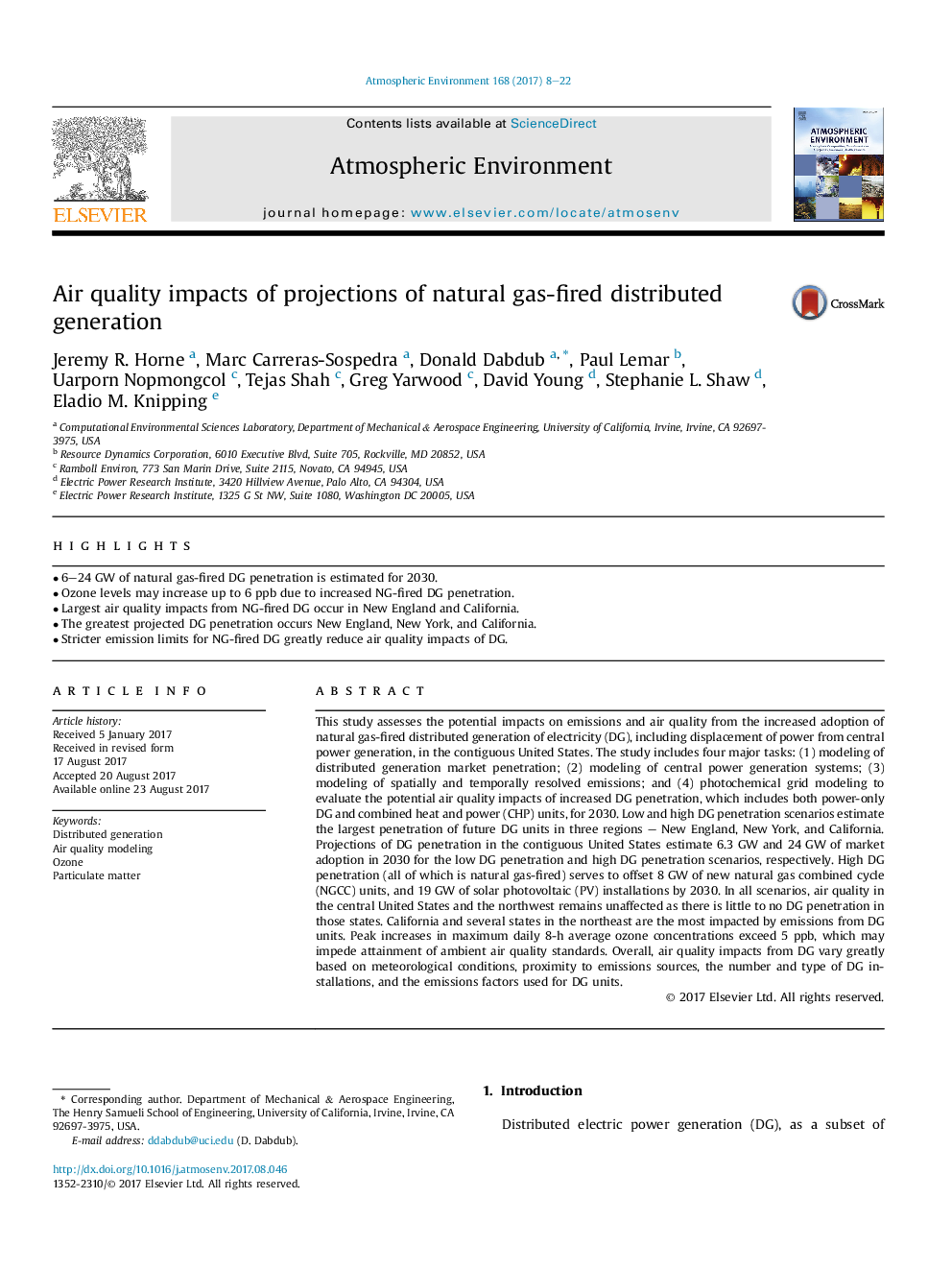| کد مقاله | کد نشریه | سال انتشار | مقاله انگلیسی | نسخه تمام متن |
|---|---|---|---|---|
| 5752784 | 1620306 | 2017 | 15 صفحه PDF | دانلود رایگان |
عنوان انگلیسی مقاله ISI
Air quality impacts of projections of natural gas-fired distributed generation
ترجمه فارسی عنوان
تاثیرات کیفیت هوا از پیش بینی های تولید پراکنده تولید گاز طبیعی
دانلود مقاله + سفارش ترجمه
دانلود مقاله ISI انگلیسی
رایگان برای ایرانیان
کلمات کلیدی
نسل توزیع شده، مدل سازی کیفیت هوا، ازن، ذرات جامد،
موضوعات مرتبط
مهندسی و علوم پایه
علوم زمین و سیارات
علم هواشناسی
چکیده انگلیسی
This study assesses the potential impacts on emissions and air quality from the increased adoption of natural gas-fired distributed generation of electricity (DG), including displacement of power from central power generation, in the contiguous United States. The study includes four major tasks: (1) modeling of distributed generation market penetration; (2) modeling of central power generation systems; (3) modeling of spatially and temporally resolved emissions; and (4) photochemical grid modeling to evaluate the potential air quality impacts of increased DG penetration, which includes both power-only DG and combined heat and power (CHP) units, for 2030. Low and high DG penetration scenarios estimate the largest penetration of future DG units in three regions - New England, New York, and California. Projections of DG penetration in the contiguous United States estimate 6.3Â GW and 24Â GW of market adoption in 2030 for the low DG penetration and high DG penetration scenarios, respectively. High DG penetration (all of which is natural gas-fired) serves to offset 8Â GW of new natural gas combined cycle (NGCC) units, and 19Â GW of solar photovoltaic (PV) installations by 2030. In all scenarios, air quality in the central United States and the northwest remains unaffected as there is little to no DG penetration in those states. California and several states in the northeast are the most impacted by emissions from DG units. Peak increases in maximum daily 8-h average ozone concentrations exceed 5Â ppb, which may impede attainment of ambient air quality standards. Overall, air quality impacts from DG vary greatly based on meteorological conditions, proximity to emissions sources, the number and type of DG installations, and the emissions factors used for DG units.
ناشر
Database: Elsevier - ScienceDirect (ساینس دایرکت)
Journal: Atmospheric Environment - Volume 168, November 2017, Pages 8-22
Journal: Atmospheric Environment - Volume 168, November 2017, Pages 8-22
نویسندگان
Jeremy R. Horne, Marc Carreras-Sospedra, Donald Dabdub, Paul Lemar, Uarporn Nopmongcol, Tejas Shah, Greg Yarwood, David Young, Stephanie L. Shaw, Eladio M. Knipping,
